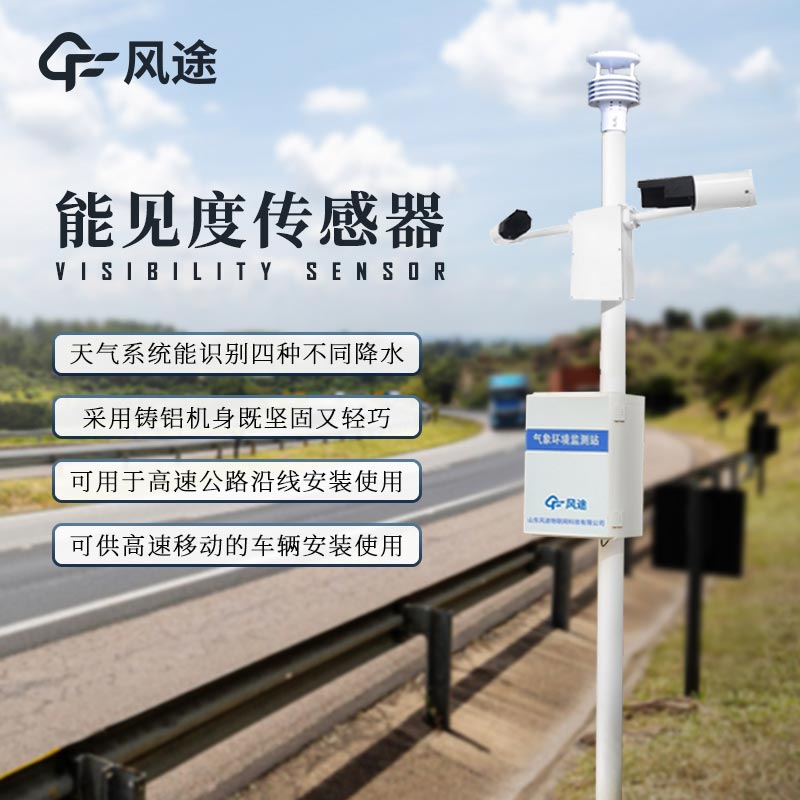Shandong Fengtu IOT Technology Co., Ltd
Sales Manager:Ms. Emily Wang
Cel,Whatsapp,Wechat:+86 15898932201
Email:info@fengtutec.com
Add:No. 155 Optoelectronic Industry Accelerator, Gaoxin District, Weifang, Shandong, China

Sales Manager:Ms. Emily Wang
Cel,Whatsapp,Wechat:+86 15898932201
Email:info@fengtutec.com
Add:No. 155 Optoelectronic Industry Accelerator, Gaoxin District, Weifang, Shandong, China
time:2024-12-17 08:58:59 source:Weather Station viewed:279 time
How to measure "visibility"?
I. Visual Estimation Method
This is a rather traditional and simple approach. Observers use their naked eyes to observe target objects. For example, during the day, they select mountains, buildings, etc. that have a sharp contrast in color and shape with the background in the distance, and judge the maximum distance at which their outlines can be clearly distinguished under the current weather conditions. This distance is regarded as the visibility. At night, it is mainly determined according to the visible range of lights. The advantage of the visual estimation method lies in its simplicity and ease of implementation. It doesn't require complicated instruments and is low in cost. However, it is overly subjective. Different observers may have significant differences in observation results due to variations in eyesight, experience, etc. Its standardization and objectivity are rather poor, and it can only provide a rough range of visibility.
II. Instrumental Measurement Methods
Atmospheric Transmissometer: It emits a light beam with a specific intensity from the transmitting end. After passing through the atmospheric path, the light intensity is detected by the receiving end. Based on the degree of light attenuation, the atmospheric transmittance is calculated, and then the visibility is deduced. It has a fairly good accuracy in measuring visibility below moderate levels. However, the equipment is large in size, complicated to install and maintain, and prone to relatively large errors in rainy and foggy weather.
Laser Visibility Automatic Measuring Instrument: It emits laser pulses and measures the extinction coefficient based on the scattering and absorption of the laser after its interaction with aerosol particles in the atmosphere, so as to calculate the visibility. It has high precision, can conduct automatic measurements, and is applicable both day and night. Nevertheless, it is high in cost and difficult to maintain. Its observation is limited in rainy and foggy days, and the safety of the laser needs to be taken into account.
Forward Scattering Visibility Detector: It emits a light beam and receives the forward-scattered light. Based on this, the extinction coefficient is calculated to obtain the visibility. It has a wide measurement range, is suitable for multiple scenarios, and the instrument's structure and operation are simple. It is low in cost and can conduct real-time and continuous monitoring.
Backward Scattering Visibility Detector: Similar to the principle of forward scattering, it receives the backward-scattered light and is small in size and convenient to install.
Different visibility measurement methods and instruments have their own advantages and disadvantages. In practical applications, it is necessary to select appropriate methods according to specific requirements and scenarios to ensure the acquisition of accurate and reliable visibility data and provide strong support for various industries.

With the arrival of the rainy season, natural disasters such as heavy rainstorms and floods occur from time to time, posing a serious threat to people's lives and property. In the game against natural disasters, accurate rainfall monitoring is one of the key links, which can provide important or...
The Visibility Detector is a professional meteorological visibility measurement device. It can be widely applied in various complex environments and scenarios, providing accurate data support for meteorological monitoring and related fields.This Visibility Detector features a stainless steel body, w...
What is the meaning of water and rain situation? In fact, the water and rain situation refers to the water and rain situation. Water condition refers to the condition of river water, such as river flow, water level, flow rate, etc.; while rain condition refers to the condition of rainfall in a certa...
In daily life, air quality is closely related to our health, and negative oxygen ions, as an important indicator of air quality, play a crucial role. Negative oxygen ions are formed due to various natural phenomena, such as solar radiation, lightning activities, water wave impacts, and plant photosy...